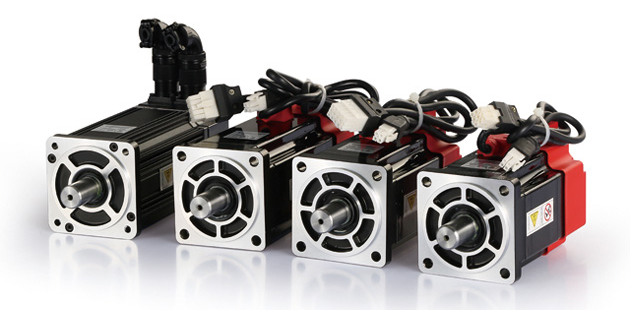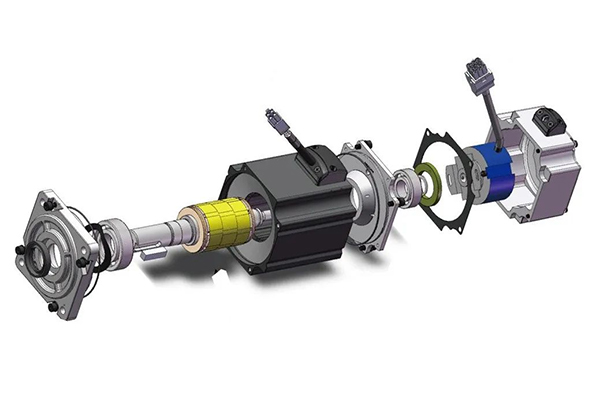Servo Motor Faults and Troubleshooting
Servo motors are widely used in various applications for their precision and accuracy in controlling angular or linear position, velocity, and acceleration. Like any other electrical or mechanical component, servo motors can experience faults and errors. Here are some common servo motor faults, errors, and troubleshooting tips.
Servo Motor Overheating
Servo motor faults can occur due to various reasons, with overheating being a common issue. This can result from machine overcurrent, prompting a need for examination by you or your maintenance engineer. Mechanical factors, including binding, brake issues, and signs of overloading, should be thoroughly inspected.
If the problem is not mechanical, scrutinize the motor shaft by spinning it to detect any bearing failures. Additionally, assess the windings for contamination or signs of short-circuiting. To prevent future servo motor overheating, consider regulating heat more effectively, using fans appropriately in well-ventilated cabinets, replacing old components, and occasionally turning off the servo motor to facilitate cooling.

The Servo Motor Does Not Turn
In some instances, your servo motor may exhibit a failure to rotate or turn despite being powered, without emitting smoke, unusual smells, or abnormal sounds. This perplexing scenario can be challenging to diagnose, given the intricate nature of servo motors with numerous components, making it difficult to pinpoint the precise cause of the issue. However, exploring potential reasons for a servo motor's failure to turn might shed light on the situation.
To avoid issues with a servo motor not turning, it is essential to perform a thorough inspection and address potential causes systematically. Start by examining and repairing any breakpoints in the rotary switch of the servo motor's power supply, junction box, and fuse. Identify the type of failed fuse and the reason for its malfunction, replacing it with a new one.
Ensure that the input signals reaching the servo controller are accurate and sufficient. Assess the condition of the motor coupling, making necessary corrections if any irregularities are detected. Verify all motor connections, cables, and connectors for looseness, tightening them as needed. Scrutinize motor thermal relays and inspect the servo controller for faults associated with motor overheating.
Rectify any wiring errors in the control unit to establish proper communication. Finally, adjust the servo motor parameters to appropriate settings or complete any ongoing system debugging to ensure optimal performance and prevent the motor from failing to turn.

No Supply Voltage
Several factors may contribute to the failure of a servo motor to operate effectively. One potential issue is the failure of fuses in at least two phases, particularly in a 3-phase supply line. This can disrupt the power supply and impede the motor's functionality. Another common problem is the servo controller not receiving essential command signals, such as run or speed signals, leading to a lack of proper motor control.
Additionally, a loose servo motor coupling can hinder the transmission of power and disrupt the synchronization between the motor and the load. Poor connections, either due to loose or open motor connections, cables, or connectors, can also result in a malfunctioning servo motor. Thermal overload of the motor, triggered by overheating, is another critical factor that can cause the motor to cease operation.
Furthermore, a wiring error in the motor's control unit may lead to miscommunication and improper functioning. Lastly, incomplete or unsuccessful servo motor debugging can leave underlying issues unresolved, preventing the motor from operating optimally. Addressing these potential issues systematically is crucial for ensuring the reliable performance of servo motors in various applications.
Dust Contamination
We don’t have to tell you that factories and plants are dirty places. So, it should be no surprise that contamination dust, oil, etc can get into your servo motor and cause a fault. The contamination may affect the brakes, bearings, or elsewhere. Expect friction, which would cause underperformance and a lot of grinding. You may notice a screeching noise, so listen out for that. To solve this, you could disassemble the servo motor, clean it, and reassemble it.
Overall, always consult the manufacturer's documentation and guidelines for specific troubleshooting steps and recommendations for your particular servo motor model. ATO provides the best servo motors to choose from, for more information about them, please go to the servo motors shopping page.

